
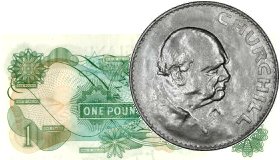

|
 |
|
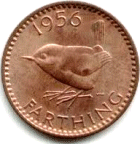 Farthing |
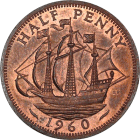 Halfpenny |
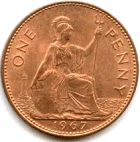 Penny |
 Threepence |
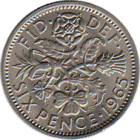 Sixpence |
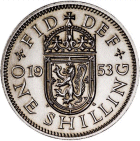 Shilling |
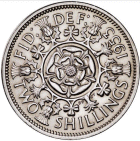 Florin |
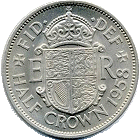 Half Crown |
 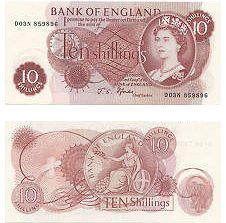 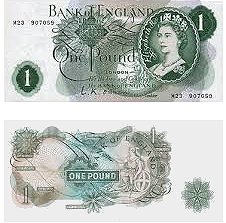 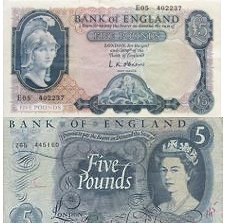 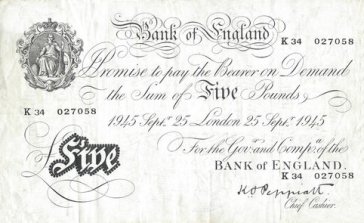 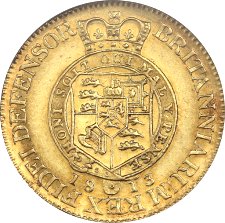 |
Until 1971, when the British coinage
was converted to decimalisation, British currency was calculated in pounds,
shillings and pence, based on the Latin names Librae, Solidii and Denarii or
£. s. d.
The shilling was also denoted by the slash symbol /, which is also called a
solidus for this reason e.g. 1 shilling and six pence would be commonly stated
as 1/6d and this sum would be spoken as 'one and six'. One shilling (i.e. one
shilling and no pence) would be commonly stated as 1/-.
The British Pound was divided into 240 pennies (or pence) rather than 100, and
sums were expressed in terms of pounds, shillings and pence where: £1=20 shillings
(20s) 1 shilling=12 pence (12d) Thus: £1=240 pence.
The penny was further sub-divided at various times, though these divisions gradually
vanished as inflation made them irrelevant: 1 penny = 2 halfpennies and (earlier)
4 farthings (half-farthing, third-farthing, and quarter-farthing coins were
actually minted in the late 1800s but circulated only in certain British colonies
and not in the UK itself ). The farthing (31st December 1960) and halfpenny
(31st July 1969) were the only sub-divisions surviving into the Sixties.
£1 and 10 shilling denominations were notes rather than coins. Causing
further confusion, there were different names for different denominations of
money in common 'slang' use. Perhaps the best-known of these were 'bob' for
a shilling, and 'quid' for a pound. A farthing was a 'mag', a silver threepence
was a 'joey' and the later cupro-nickel threepence coin was called a threepenny
(pronounced 'threpny') bit, a sixpence was a 'tanner' , a shilling was a 'bob',
the two-shilling coin was 'two bob' or a 'florin' and the 2/6d coin, or half-crown,
was 'half a dollar'.
The pre-decimalisation coins with exact decimal equivalent values continued
in use after 1971 alongside the new coins, albeit with new names, with the shilling
becoming the 5p coin and the two shilling florin equating to 10p. The others
were withdrawn almost immediately, with the exception of the old sixpence (2.5p)
which lasted until 1980.
| Metrication British industry has, historically, been opposed to metrication using the argument that the bulk of their exports were shipped to countries that were using imperial measurement systems. However, by the Sixties fairly significant changes in trade patterns, and the adoption of metrication by other countries, weakened their case to the point where, in 1965, the Federation of British Industry (now CBI) implemented the changeover to the metric system, albeit on a 'voluntary' basis. Before the Metrication Board was set up in 1969, the initiative was overseen by the BSI (British Standards Institution) and The Royal Society who carried out much of the necessary background work with the transport and engineering sectors. Metric compliance continued to be handled on a 'voluntary' basis until 1973, when Britain joined the EEC and inherited an obligation to adapt British law to comply with existing EEC directives. Although road signs have evolved to be more consistent with European standards they have never been subject to specific metrication. Prior to the 1970s metrication, distances on the UK's rail network were stated in miles and chains, with speed limits quoted in miles per hour. These units were retained by British Rail but London Transport recalculated their Underground network in kilometres, measured using Ongar as point zero. The metrication of admiralty charts began in 1967 but the Royal Navy showed no inclination to fully adopt metrication, preferring to state both measurements i.e. miles/cables and metres for distance and fathoms and metres for depth. The most bizarre imperial/metric occurrence is probably that imperial units were used in the design of the supersonic BAC Bristol 198. Due to costs, BAC ended up entering into a joint venture with Sud-Aviation of France that culminated with the production of Concorde. The sections designed by the British company were done in imperial measurements and those by the French in metric - amazing that it ever got off the ground! |
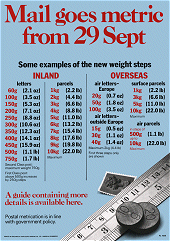 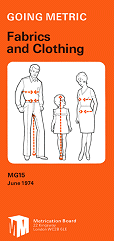 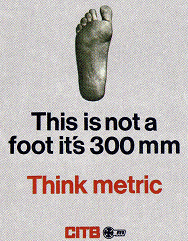 |
|
|
All
Original Material Copyright SixtiesCity
Other individual owner copyrights may apply to Photographic Images |